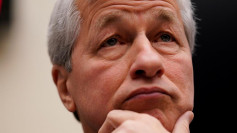Oil traded near the highest peak in nearly 12 weeks after Saudi Arabia surprised the market with a significant cut in supply beyond what was agreed upon with fellow members of OPEC+.
New York's futures moved down after a 1.3 percent rise on Friday to complete a 7.3 percent weekly gain, the most since mid-June. The Kingdom agreed to produce 400,000 barrels per day less than OPEC+ had planned, leading to full average curbs for the 2.1 million barrel band per day.
After the move, Goldman Sachs Group Inc. raised its 2020 Brent forecast, saying it was a shift towards managing short-term physical imbalances rather than attempting to correct long-term imbalances through open commitments.
Natural Decline
The announcement came after it earlier slashed bullish wagers on WTI crude from hedge funds. Moreover, data showing that Chinese exports dropped abruptly in November was more negative on the demand side.
"The decision of OPEC+ may have put a slightly higher bottom under crude prices," said Vandana Hari, founder of Singapore's Vanda Insights. "But as the dust settles on the Vienna deal, it will only be natural for the oil market to return its focus to the U.S.-China trade war and its global economic downturn."
West Texas Intermediate for January delivery dropped 30 cents, or 0.4 percent, to $58.90 per barrel on the New York Mercantile Exchange. In Europe, the contract closed at $59.20, the highest since Sept. 17.
Brent's settlement on the London-based ICE Futures Europe Exchange fell 22 cents, or 0.3 percent, to $64.16 a barrel. The contract was up 1.6 percent on Friday, 3.1 percent higher at the end of the week. The international oil index stood for the same month at a premium of $5.36 over WTI.
Price Jitters
Prince Abdulaziz bin Salman, Saudi Arabia's energy minister, sent prices soaring on Friday with the promise to downgrade the kingdom's production to levels not seen on a sustained basis since 2014, data compiled by Bloomberg show.
Following two days of grueling talks in Vienna focusing on adjusting OPEC+ quotas, Russia, Iraq, Kuwait, and the United Arab Emirates were among the nations taking the largest cuts other than the Saudis.
Meanwhile, Chinese exports to the United States dropped from a year earlier last month by 23 percent, the most since February this year. After Beijing and Washington decided in October to cooperate on a 'phase one contract,' there was optimism that this would lead to at least certain problems being settled rapidly.





